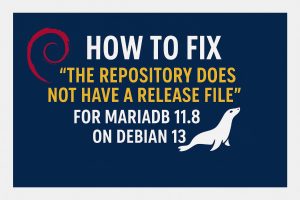When CentOS shifted to a rolling-release model with CentOS Stream in 2020, it left users searching for a stable, enterprise-grade Linux alternative. In response, two major contenders emerged: Rocky Linux and AlmaLinux. While both are 1:1 binary-compatible rebuilds of Red Hat Enterprise Linux (RHEL), their differences in governance, philosophy, and technical implementation can help you decide which best fits your needs.
This guide explores their key differences, strengths, and weaknesses, along with reliable sources to support each claim, so you can make an informed choice.
Philosophies and Governance
Rocky Linux: A Community-Driven Alternative
Rocky Linux was founded by Gregory Kurtzer, one of the original creators of CentOS. Its mission is to restore a community-first model, ensuring long-term stability and transparency free from corporate influence.
- Governance: Managed by the Rocky Enterprise Software Foundation (RESF), which empowers the community to control the project’s direction and infrastructure.
- Ideal For: Organizations that prioritize independence and stability, such as research institutions and open-source projects.
Citations:
- Rocky Linux’s governance and community ownership model: Rocky Enterprise Software Foundation Official Site.
AlmaLinux: Reliability with Enterprise Expertise
AlmaLinux was initially developed by CloudLinux Inc. to replace CentOS for enterprises and hosting providers. It has since transitioned to the AlmaLinux OS Foundation, combining community collaboration with enterprise-grade reliability.
- Governance: Overseen by the AlmaLinux OS Foundation, a non-profit organization that balances corporate contributions with community-driven input.
- Ideal For: Enterprises and hosting providers requiring fast updates and reliable RHEL compatibility.
Citations:
- AlmaLinux’s foundation and community focus: AlmaLinux OS Foundation.
Technical Comparisons
| Aspect | Rocky Linux | AlmaLinux |
|---|---|---|
| Build Infrastructure | Fully community-controlled via the Peridot Build System, ensuring transparency and reproducibility. | Initially relied on CloudLinux infrastructure but now uses independent systems. |
| Release Frequency | Slightly slower, focusing on stability and predictability. | Faster updates, including security patches, thanks to its enterprise-oriented focus. |
| Migration Tools | Compatible with standard migration tools. | Includes the Elevate Project, which simplifies upgrades from CentOS 7. |
| Security Updates | Community-driven updates, methodical but slightly slower. | Rapid patches leveraging enterprise-grade infrastructure. |
Citations:
- Peridot and Rocky Linux’s independent build process: New Build system (Peridot).
- AlmaLinux’s faster patching process and Elevate Project: Elevate Overview.
Pros and Cons
Rocky Linux
Pros:
- Fully community-governed, ensuring transparency and neutrality.
- Stable and predictable, ideal for critical workloads.
- Trusted by users who want to avoid corporate influence.
Cons:
- Security patches and updates can be slower than AlmaLinux.
- Still building traction in enterprise environments.
Citations:
- Rocky Linux’s stability focus: TechRepublic.
AlmaLinux
Pros:
- Faster updates, including critical security patches.
- Migration tools like the Elevate Project make transitions seamless.
- Initially backed by CloudLinux, giving it a solid technical foundation.
Cons:
- Some users perceive lingering corporate influence despite its transition to a foundation.
- Balances corporate and community governance, which may not appeal to purists.
Citations:
- AlmaLinux’s quick patch cycle and enterprise focus: AlmaLinux Blog.
When to Choose Rocky Linux
- Independence and Transparency: Ideal for organizations that value long-term community governance without corporate ties.
- Stability Over Speed: Best for environments where uptime and predictability are more critical than rapid updates.
- High-Performance Computing (HPC): A great choice for research and academic institutions that require consistency and reliability.
When to Choose AlmaLinux
- Rapid Security Updates: Perfect for environments requiring fast patches and updates.
- Hosting and SaaS Providers: Tailored for hosting platforms and web services that need flexibility and enterprise-grade reliability.
- Seamless Migration: Use the Elevate Project to easily transition from CentOS or other RHEL-based systems.
Citations:
Final Thoughts
Both Rocky Linux and AlmaLinux offer reliable, RHEL-compatible distributions. Your decision depends on your priorities:
- Choose Rocky Linux if you value community-driven development, stability, and long-term transparency.
- Choose AlmaLinux if you prioritize faster updates, migration tools, and enterprise-ready features.
Whichever you choose, rest assured that both distributions are robust solutions capable of supporting critical workloads.







